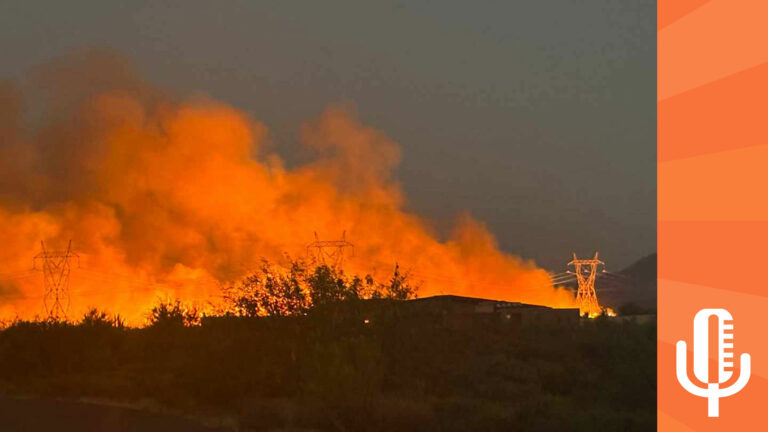Rising Homeowners Insurance Costs in Arizona
A report from The Consumer Federation of America reveals that Arizona has seen a significant 48% increase in homeowners insurance rates between 2021 and 2024, ranking third highest in the nation. State Senator Mark Finchem attributes this rise partly to the growing wildfire risk and lack of federal action to mitigate it.

Finchem, a Republican, chaired a Senate Federalism Committee hearing on the issue, pointing to successful land management practices by tribes like the Navajo Nation and White Mountain Apache as examples to follow. He criticized litigation preventing active land management by federal and state agencies, citing the Rodeo Chediski Fire as an example of large-scale wildfires.
“So the Navajo Nation and the White Mountain Apache, they’re active land managers. And if you look at their forests, they look nothing like the forests that have blown up in fire in California, Oregon, Washington state, and even here in Arizona,” Finchem said.
To address the issue, Finchem suggests funding local fire departments to provide subsidized fire fuels mitigation on private property, particularly in rural areas. He also proposes that Arizona act as a re-insurer, offering insurance to insurance companies against large-scale catastrophes.
“When you are paying out more in claims than you’re taking in in premiums, that’s a recipe for bankruptcy. So I think there is merit to the state funding a treatment program for the rurals. There is also, I think, an opportunity for the state to step in and say, ‘we want to have a reinsurance program,'” Finchem explained.
The insurance industry cites multiple factors contributing to rising costs, including inflation in construction costs, rising housing prices, and natural disasters. Karen Collins, Vice President at the American Property Casualty Insurance Association, noted that property reconstruction costs surged 50-60% due to inflation.
“The insurance costs from inflation for property reconstruction replacement costs surged much higher, jumping upwards of 50-60%. Now, fortunately, these trends have come back down a little bit. They’ve stabilized, but on a cumulative basis, they remain up. Upwards of like 30% since the start of the pandemic,” Collins said.
The Insurance Institute for Business and Home Safety has identified three key factors in wildfire damage to homes: drought, strong wind events, and fires starting near built environments. Steve Hawks, the institute’s Senior Wildfire Director, emphasized the importance of building codes that make homes more fire-resilient, which can add 3-7% to construction costs.
“We really need to be focused on making sure that the homes are built to be able to have the best chance. Survival that allow the people to return to a home after the wildfire passes through, and also allows the homeowner to have a better chance of getting insurance and maintaining insurance and making the home more insurable,” Hawks said.
Some states, like Florida, have established public insurance options as ‘insurers of last resort’ when private insurers won’t cover high-risk areas. Craig Fugate, former director of Florida’s Division of Emergency Management, explained how such programs work, citing Citizens Property Insurance as an example.
“As the insurance industry is unable to either provide products or provide products that are affordable, states are finding that this becomes a huge issue and growth. If you can’t insure new construction, people can’t get a mortgage… And so states are, in many cases, finding that pressure from builders and developers and realtors to provide affordable insurance or just make insurance available,” Fugate said.
The issue of rising homeowners insurance costs in Arizona highlights the complex interplay between wildfire risk, insurance industry practices, and state policy decisions.


